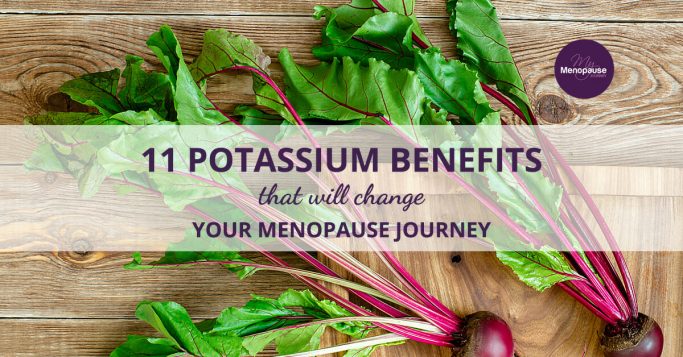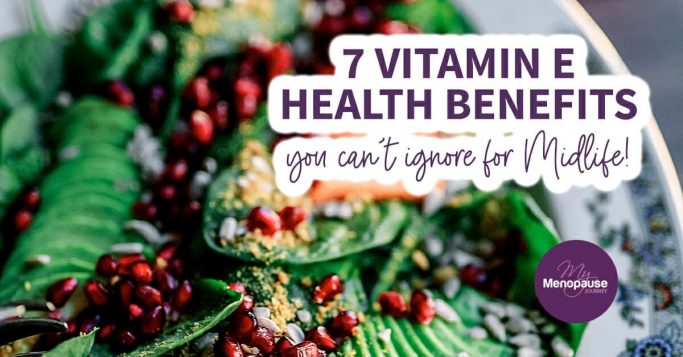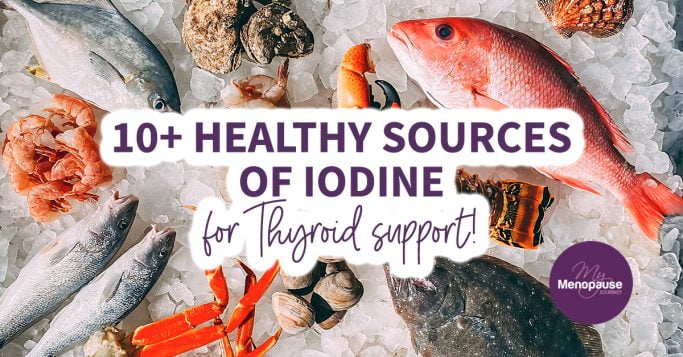We hear about “essential fatty acids” in the form of omega 3 and omega 6 in almost every market and health advertisements that inform their importance in our diet. It is also the same reason we now know that eliminating fats in our diet is not necessary to achieve a fit and healthy body. But we are still on the verge of confusion and blurry concepts of why and how these fats we once thought are bad for our health are now being suggested to be included in our food pyramid?
The answer is balance. Once we unlock the right proportion and ratio of each, we will be able to only optimize its benefits of good effects in our health. The right balance of these fatty acids will set aside its possible unwanted effects in our body. However, it still seems we still have so many things to know about essential fatty acids and how they affect our health.
What are essential fatty acids?
The difference of essential fatty acids (or EFA) to regular fats is our body cannot create them so we need to get them from an external source that could be food or supplement. Omega 3 and omega 6 are two forms of EFA’s that are essential to our cell membranes. EFAs protect and strengthen our organs such as the heart and digestive tract. It also improves the immune system and enhances the capabilities of cell messengers that would result to proper function of the brain.
Omega 6
Excessive consumption of omega 6 can lead to certain complications like depression. Studies suggest that the right ratio of omega 6 to omega 3 consumption is 1:1, but because omega 6 is present in most foods that we daily consume, it usually lead to its excessive consumption of 16:1 ratio (mainly from vegetable oils). According to research, the ratio changed due to consumption of conventional meat, which a lot of producers supply to markets today. Those conventional meats are from animals fed with grains instead of grass that results to the imbalance of omega 3 and omega 6. To improve the quantity of production, today’s meat suppliers use grains as food for the animals in able to increase its weights faster. This change affected the components of the conventional meat in the market, that led to its nutritional contents with more omega 6.
However, if taken at right amounts and ratio, omega 6 could actually help in the reduction of symptoms of certain diseases like diabetes, arthritis, and high blood pressure. It could also lessen menopausal symptoms like breast pain and tenderness. Omega 6 could also improve cases of ADHD, eczema, menstrual cramps and multiple sclerosis. A good diet contains some omega 6 EFA, but should somehow be balanced by taking omega 3 supplements. Most of the products in the market contain more omega 6. You would know it by always checking the labels. Some products include the proportion of omega 3 and omega 6 in their nutrition facts. Prefer products that indicate a balanced ratio of these fatty acids, or those that have more omega 3 than omega 6.
Foods High in omega-6:
- Poultry
- Nuts
- Whole-grain bread
- Evening primrose oil
- Most vegetable oils
- Cereals
- Drum wheat
- Hemp oil
- Soybean oil
- Pumpkin seeds
Omega 3
Products containing omega 3 fatty acid boomed in supermarkets because of its proven positive effects in health. The greatest source of omega 3 that has quality eicosapentaenoic acid (EPA) and docosahexaenoic acid (DHA) are wild-caught fatty fishes or grass fed meat. There are also a lot of omega 3 supplement products in the form of capsules available in the markets nowadays. Some products from green leafy plants like linseed oil or canola oil also have low quality omega 3 fatty acid called ALA. The body converts ALA to EPA and DHA but only in minimal amount.
Many studies have proven its good effect in health. Some researches state its ability to prevent and cure diseases like Alzheimer’s disease, osteoporosis, certain type of cancer (breast, colon, prostate), diabetes, obesity, heart disease, stroke, schizophrenia, depression, high cholesterol, and many more.
Women who have low levels of omega 3 in their blood experience inflammation, which results to more and severe menopausal symptoms. Omega 3 soothes the inflammation and aids to reduction of the episodes of the symptoms such as, vaginal dryness, heart problems, joint pains and thinning of hair.
Foods high in omega 3 are:
- Flaxseed
- Hemp oil
- Herring, sardines
- Mackerel
- Salmon
- Halibut
- Tuna
- Swordfish
- Tilefish
- Cod
- Catfish
- Canola oil
- Walnut
Balance of Omega-3 and 6
You might have heard that omega 3 is pertained to as “good fats” and omega 6 as the “bad fats”. This misconception ascended due to our excessive consumption of omega 6 from processed seeds, vegetable oils and artificial trans fats from animal fats that are present in our daily meals. The adequate ratio of omega 3 and 6 is essential for health balance and optimal function of our body. Omega 6 favor inflammation while omega 3 counters it. This relationship is vital for the reduction of inflammation in the body, and the right proportion of both is essential for health.
The right ration of omega 3 and 6 is 2:1 and 4:1. But because of the usual American diet consisted of burgers and bacons floating in oils, the usual daily consumption reach up to 10:1 and 30:1. Just imagine how unbelievably far is that to the ideal balance. Compared to Mediterranean diet, the American diet apt to consume 14-25 times more omega 6 fatty acids than omega 3. That’s why those who engage in Mediterranean diet have lesser risks to heart diseases, and other problems in cholesterol. The Mediterranean nourishment focuses more on food high in omega 3 like fresh vegetables, fruits, fish, olive oil and moderate consumption of wine. Meat that is high omega-6 content is their least choice of food so they seldom include it on their meals.
It is important to be aware of the food we eat. Avoid processed products that have modified fats. They block the natural break down of dietary fats. If the products state the process “hydrogenated” or “partially hydrogenated”, put them down. Hydrogenated fats have undergone a partial or complete chemical process of adding hydrogen to liquid oils to turn them into solid forms. These products with altered fats could bring harmful effects in the body such as high cholesterol and heart problems.
How to Find Balance in Omega-3:Omega-6 Ratio
Prefer the Unprocessed
Unprocessed oils like virgin coconut oil, extra virgin olive oil, avocado oil and organic butter (pastured from grass-fed cow) are low in omega 6. Processed oils and packed products have hydrogenated oil or trans fats. These kinds of fats are metabolized differently and may interfere in the conversion of dietary fats to energy, not to include the other harmful effects of it in the body.
Chew on Nuts
Raw nuts and seeds such as organic flaxseeds, sunflower seeds, chia, sesame seeds, pumpkin seeds, almonds and walnuts are high in ALA omega 3 that are converted in the body as EPA and DHA, which are high quality omega 3 fatty acids.
Grass-Fed Meat
Choosing grass-fed organic meat from conventional meat products in the market could greatly help in lowering your omega 6 consumption. Additionally, grass-fed animals have conjugated linoleic acid (CLA) that could improve weight loss, a beneficial substance for diabetic people and has anti-cancer properties.
Grab some Eggs
Eggs are the most nutritious food that the world conceives. Chickens that are fed with kelps and seaweeds produce eggs that are rich in EPA and DHA, which are the quality substances of omega 3. Eggs could also lower high blood pressure and improves the digestion process. It holds a lot of health benefits such as a good protein source and reduces risks to heart problems. Aside from eggs can turn into a delicious omelets, it is actually also a trustworthy friend of our organs.
Krill: Best Source of Omega-3?
Dr. Mercola has been suggesting for years that krill is a far better option than fish oils as omega-3 source. With several studies as his back up of his recommendation, he has been urging people that krill is the most potent source of omega 3 that could help us achieve the right balance of omega 3:omega 6 ratio. Here are some of Dr. Mercola’s points for his recommendation:
- Krill oil’s omega 3 content is much potent than fish oil, which means lesser dosage of krill oil is enough to provide the amount that the body needs compared to fish oil.
- Krill oil contains phospholipids, which means its omega 3 is in the form that is readily available for the body. This is vital for adequate absorption of omega 3 in blood and for the brain’s health.
- Fish oil is susceptible to oxidation, and oxidation could result to harmful radicals in the body. Krill oil has potent antioxidant property that could eliminate these harmful radicals.
- Many types of fish and fish oils are mostly contaminated with heavy metals like mercury. It is because several plantations have polluted the habitat of these fishes. On the other hand, Krill that lives in the Antarctic is not affected by this contamination.
- Krill, as the biggest biomass in the world, is a more sustainable food source than fish. This means that krill could be easily harvested than wild-caught fatty fish.
Listen to Dr. Mercola and the benefits of Krill oil (Time 8:13) |
| NatureWise Krill Oil comprises 100% pure Superba Krill. With its vertically integrated Eco-Harvesting practice, it is the only krill oil to receive full sustainability certification by the Marine Stewardship Council (MSC). NatureWise Krill Oil has omega-3 EPA and DHA essential fatty acids, two crucial omega-3s that support cardiovascular, joint, and brain health. Made in the USA. NatureWise is an NSF certified company and all products are made according to strict NSF standards. Doctor-formulated, non-GMO, and gluten-free. |
| Supports a healthy heart, concentration, memory and learning. Fights signs of aging. Relief of typical pms symptoms and healthy mood support. |
👉 What to Do Next
Don’t go just yet — especially if you’ve been feeling off and no one’s given you real answers.
Go to the START HERE page.
It’s where things begin to feel clearer. No more second-guessing, no more sorting through conflicting advice. Just calm, honest support for where you are right now.
And if you haven’t yet, download the FREE GUIDE.
It’s quick, clear, and made to help you feel better — without having to turn your whole life upside down.


Gita is the founder of My Menopause Journey. Since 2014, she has been supporting midlife women by sharing hard-earned learnings from her own experience. To advance her knowledge, Gita puts a lot of her time and effort into understanding the broad spectrum of women’s health. She immerses in extensive research about the physical, mental and emotional aspects of menopause. Gita believes in the life-changing power of healthy, holistic living — this is where she anchors her message to all women. Learn more about her marvelous mission in About us - My Menopause Journey.




